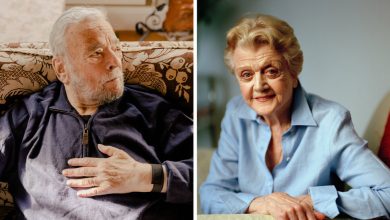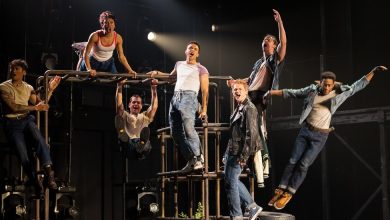‘My Old School’ Review: An Impostor Makes the Honor Roll

“What is a person?” It’s a profound and complicated philosophical question, posed by a man named Stefen during an interview in “My Old School.” Like most of the other people who appear on camera in this brisk, slippery documentary, Stefen has a particular person in mind, a student at Bearsden Academy in the early ’90s known to his classmates as Brandon Lee.
Stefen, who is one of the few Black pupils at Bearsden, a school in an affluent section of Glasgow, remembers Brandon fondly as a friend who invited him to parties and protected him from racist bullying. Other Bearsden alums have more ambivalent memories, but they all describe a curly-haired young man who impressed his teachers, charmed his peers and wanted more than anything else to become a doctor.
They also agree that their classmate, who showed up as a fifth-year student (roughly the equivalent of a high school junior) after the start of the academic year, could seem a little odd. He looked older than 16 — “he had old skin,” one of them recalls — and alluded to a mysterious and tragic family history. He also had a car and a fondness for ’80s pop music, neither of which was typical among Glaswegian teenagers in 1993.
As it turned out, Brandon wasn’t a teenager at all. When Stefen and the others first met him, he was 32 years old, and the name he used was borrowed from a recently deceased celebrity. This isn’t a spoiler, even though “My Old School,” directed by Jono McLeod — a television journalist who was one of Brandon’s classmates — arranges the case into a teasingly suspenseful narrative. The hoax was widely reported in Scotland and beyond, and the news reports and talk-show interviews that McLeod folds into the story may jog dim recollections of a faded media frenzy. There have been so many other grifters and impostors to keep track of in the intervening years.
“Brandon,” whose real identity comes out midway through the movie, is given the chance to explain himself, though it can’t quite be said that he reveals himself. The gray-haired, middle-aged man in a drab windbreaker who faces the camera is the actor Alan Cumming, who faultlessly lip-syncs a first-person tale, told in the “real” Brandon’s voice, that is by turns sad, strange and self-serving.
The movie, in the end, doesn’t quite know what to make of it all, perhaps because of the director’s barely mentioned personal stake. In flashbacks, Brandon and his classmates are represented in brightly colored, simply drawn animation that evokes the MTV cartoons of the era. Some of their adolescent voices belong to actors and pop singers, emphasizing the gap between them and their grown-up, live-action selves.
There’s a disjunction between the jaunty, can-you-believe-this tone of “My Old School” (which ends with a peppy cover of the Steely Dan song of the same name) and the darker implications of its story. The people who knew Brandon look back mostly with incredulity and amusement at his imposture and extend him the benefit of the doubt when it comes to his motives. The film takes his words at face value — even though it doesn’t show his face — and takes for granted that his deceit was benign, motivated by his ambition to study medicine and overcome adversity.
At the same time, surely there is something creepy about a grown man socializing with children half his age, not only in the halls of Bearsden but also at parties where he served them alcohol, and on a vacation he took with a few of them to Spain. The movie glances toward this moral gray area but mostly looks elsewhere, practicing a troubling kind of access journalism and falling back on a dubious epistemological relativism. Its fascination with Brandon becomes a kind of credulity, a willingness to accept uncritically the mystifications of a proven liar.
My Old School
Not rated. Running time: 1 hour 44 minutes. In theaters.





